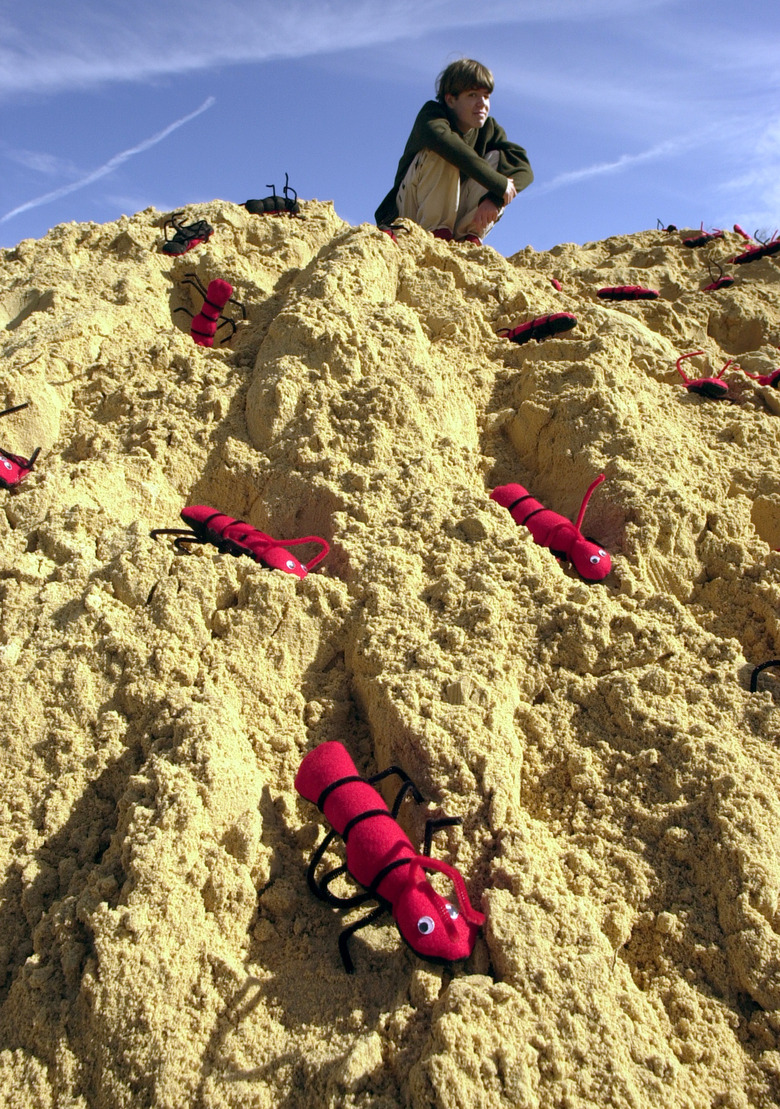Dirt Mounds Caused By Insects
Dirt mounds in your yard, especially in your lawn, are an unsightly annoyance. Although small mammals and other critters can such disturbances, insects are often the culprits. The type and size of the mounds provide a key to the insects involved. Take care in trying to identify the pests; some can give you a painful sting. Identifying the specific pests is critical in deciding if the piles are likely to create lasting damage or need any intervention on your part.
Ants
Ants are familiar producers of soil mounds. Not all ant species live in all parts of the United States, but most areas have one or more ant species that cause such disturbances. Fire ants and Allegheny mound ants both create impressive mounds. Allegheny mound ants have mounds up to 3 1/2-feet tall and as wide as 18 feet, according to West Virginia University Extension specialists. Fire ants create mounds up to 1-1/2 feet tall, notes Texas Cooperative Extension specialist Richard L. Duble, while pyramid ants may create low mounds, and leafcutting ants produce several very small mounds.
- Dirt mounds in your yard, especially in your lawn, are an unsightly annoyance.
- Fire ants create mounds up to 1-1/2 feet tall, notes Texas Cooperative Extension specialist Richard L. Duble, while pyramid ants may create low mounds, and leafcutting ants produce several very small mounds.
Bees and Wasps
Solitary bees and cicada killer wasps both create small earth piles when they exit their underground burrows. Several burrows in the same area indicate wasp colonies. University of Kentucky Extension entomologist Lee Townsend describes the wasps as throwing out soil in distinctive U-shape mounds around the burrows' entrances.
Other Adult Insects
Cicadas emerge from burrows through round holes in soil mounds very similar to those of the cicada killer wasps that attack them. Gardeners often suspect mole crickets, which damage grass roots, of producing earth mounds in their lawns, but mole cricket activity typically shows up as narrow tunneling during winter. The exception, however, is on closely mowed turf, such as on athletic fields, according to University of Georgia Extension agent Willie Chance, where mole crickets do produce mounds.
Insect Larvae
Green June beetle larvae pile up soil when they exit the ground at night or after rain, notes North Carolina State University Integrated Pest Management. The beetles are most destructive in this larval or grub stage after overwintering when they begin feeding on plant roots. Japanese beetle grubs, which look similar, often wreak havoc with grass roots, but are not associated with this type of soil mounding.
- Solitary bees and cicada killer wasps both create small earth piles when they exit their underground burrows.
- Gardeners often suspect mole crickets, which damage grass roots, of producing earth mounds in their lawns, but mole cricket activity typically shows up as narrow tunneling during winter.
References
- Aggie Horticulture Texas Cooperative Extension; Managing Turfgrass Insects; Richard L. Duble
- Clemson University Cooperative Extension: Home & Garden Information Center – Holes in the Lawn
- University of Kentucky College of Agriculture; Cicada Killer Wasps; Lee Townsend
- University of Georgia Cooperative Extension; Houston County Mole Crickets; Willie Chance
- North Carolina Cooperative Extension Service; Urban Integrated Pest Management: Insect Management; J. Baird, et al.
- West Virginia University Extension Service; The Allegheny Mound Ant and Its Control; Brad Smith, et al.
